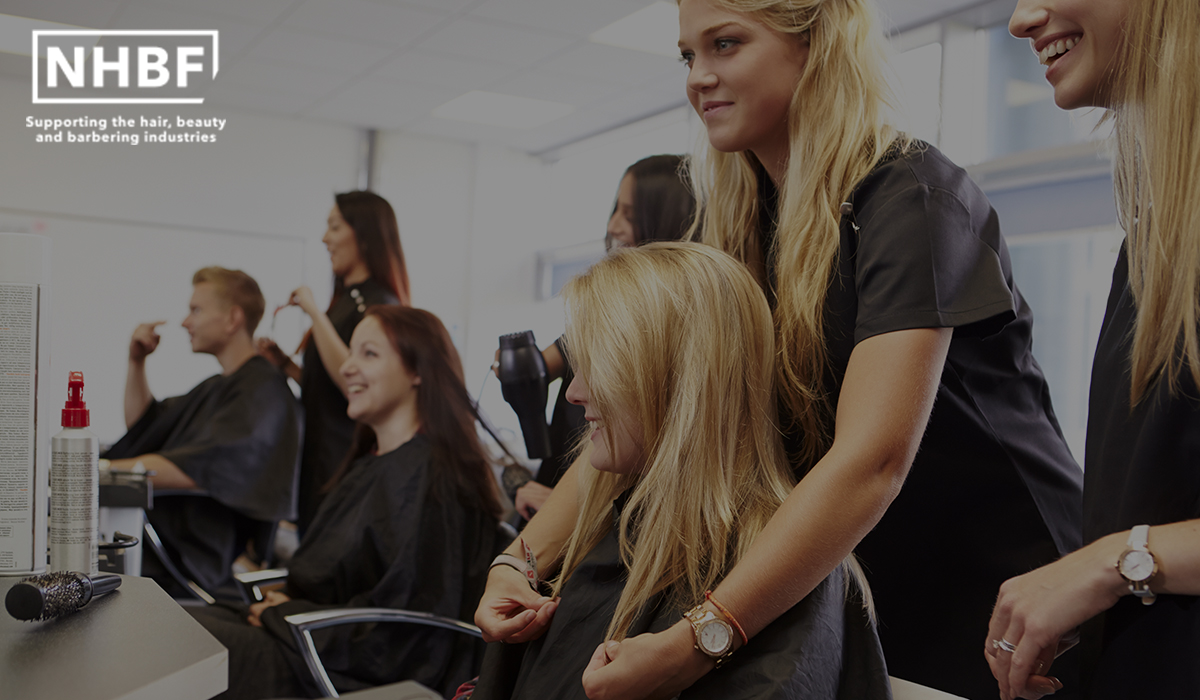The NHBF has dedicated July to the new generation of hair and beauty apprentices and learners just starting out in their career.
Our annual Industry Statistics Survey has shown a decline in the number of hair & beauty apprentices year on year since 2018 so we want to start a debate, asking, as an industry in flux, what could the future of hairdressing look like, and is it what we want?
What is the impact of the rise of the self-employed hairdresser?
Individual self-employed people are unlikely to hire anyone else, especially a trainee. Salon owners who hire only self-employed staff are equally unlikely to invest in training an apprentice, who won’t deliver income into the salon for around two years.
However, we are seeing the emergence of a hybrid salon model, where most of the stylists are self-employed and the salon invests in apprentices supporting them as fledgling stylists, growing their skills and confidence until they are ready to become self-employed.
Has the cost of employing apprentices become a major barrier to people coming into the industry?
Recent surveys have shown salon owners reluctant to take on apprentices because they are “all cost and no revenue” for up to two years.
Salons are unable to afford to take older learners due to having to pay the higher rate of National Minimum Wage (NMW) after the first year.
The Government’s latest Skill Recovery Package, whilst welcomed, offers just £3,000 for new employees of any age who start their apprenticeship from 1 April 2021 to 30 September 2021.
However, a typical 16-18yr old apprentice full time wage for 24 months (the period of the apprenticeship) costs around £14,660 and a typical wage for an apprentice aged 19+ is around £20,800, so this funding provides no real incentive for employers, especially during this difficult financial period.
Does government have a proper understanding of the sector when it sets the rules for apprenticeships?
Probably not as employers are not able to claim the apprenticeship incentive payments if they take on existing Saturday or part-time staff because they are not considered “new” employees, effectively removing the incentive from one of the traditional entries into the industry.
What will be impact of the imminent introduction of T-Levels in England?
The government’s preferred route for 16-19-year-olds is mainly classroom-based and requires learners to demonstrate ‘threshold’ competence, ie the very basic level.
Anything short of full competence isn’t attractive to salon owners, who are asking whether T-levels will create a generation who have the technical skills, but are not ‘salon-ready’, and will need be trained in these skills whilst also being a fully-paid worker. If T-levels get a poor reputation, that won’t help public perception of hairdressing and beauty as a revered and viable profession.
Are school-leavers actually interested in a career in hairdressing or beauty?
Employers may be worrying about the cost at the moment, but could they find the candidates if they wanted them? There is anecdotal evidence of salons that are taking on more apprentices to cope with demand post-lockdown and a rise in interest in hair and beauty as a career. However, others say that the emphasis by schools on academic routes to college and university puts many young people off more vocational careers.
And ultimately what does lack of new talent coming in to or being supported by the industry mean for clients in the future?
If the majority are seen as less skilled or competent, will those with expertise be able to name their price? A nation of awful hair – imagine! UK hairdressing, and UK hairdressing education, is regarded as the best in the world – it would be a shame to lose that accolade.
Richard Lambert, NHBF chief executive says, “If there is a positive from COVID, it is the elevated profile of hair, and we must use this to ensure a successful future for the industry.nWhat we need is for all hair & beauty professionals, from salon owners to those just starting out to join in the conversation and let us know your thoughts.”
Join the conversation
@nhbfsocial
#shapingthefutureoftheindustry
NHBF





